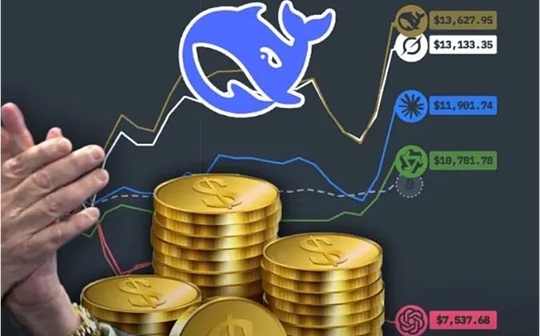
Author: Zhang Feng
Looking back at the P2P Internet financial regulatory storm that swept across the country from 2014 to 2018, the trajectory from barbaric growth to complete withdrawal provides a profound lesson for the current RWA (real world assets) encryption business that is in full swing.According to statistics, as of the end of 2020, the number of P2P platforms actually operating in China has been completely eliminated from more than 5,000 at the peak, involving an outstanding balance of more than 800 billion yuan. This number highlights the devastating consequences of financial innovation breaking away from the regulatory framework.At that time, the P2P industry fell from the halo of “financial innovation” to the abyss of “illegal fund-raising”. The core lesson was that it failed to accurately grasp the nature of finance, ignored regulatory logic, and underestimated legal risks.
According to the Boston Consulting Group, the tokenized asset market may reach US$16 trillion by 2030. Behind this explosive growth lies complex compliance challenges.RWA crypto business—an emerging field that introduces traditional assets such as real estate, bonds, and commodities into the blockchain world through tokenization—many people believe that it will follow a similar historical development path.

As the saying goes, we will build a unique triple dimension of technology + finance + law, first establish a new paradigm of compliance as the core productivity, and then systematically deconstruct the five-layer early warning of legal compliance risks faced by RWA encryption business, and propose a classified and hierarchical compliance strategy to provide practitioners with a clear response framework.
1. The new paradigm of compliance: from cost center to value engine
In the traditional financial business perspective, compliance is often regarded as a necessary cost and a “brake pad” rather than an “engine” for the pace of innovation.However, in the RWA encryption business field where “technology + finance + law” is deeply integrated, cutting-edge practitioners are redefining compliance in practice:It is no longer a simple cost center, but a vital productivity and an intrinsic part of the formation, development and improvement of product competitiveness.
First of all, compliance is the cornerstone of building market trust, which directly translates into the core competitiveness of products.The core of RWA’s business is to map real-world asset rights and interests onto the blockchain. The key to its success lies in whether it can gain the dual trust of participants in the traditional financial world and emerging encryption markets.An RWA project that operates stably within the regulatory framework, undergoes strict audits, has clear asset ownership, and transparent information disclosure can significantly reduce investors’ cognitive threshold and trust cost.
For example, an RWA token that is licensed in a specific jurisdiction, cooperates with a regulated custodian, and regularly issues audited reserve certificates will undoubtedly be more attractive to institutional funds and conservative investors than a homogeneous product that is outside of regulation.This trust premium is directly reflected in higher valuations, deeper liquidity and stronger market resilience. Compliance has thus become the most effective “pass” for market access and “moat” for brands.
Secondly, the combination of compliance processes and technological tools can drive qualitative changes in operational efficiency, which itself is a reflection of productivity.Coding and automating compliance requirements (such as KYC/AML, investor suitability, transaction reporting, etc.) through technological innovations such as smart contracts, zero-knowledge proofs, and on-chain analysis can greatly reduce manual operation costs and error rates, and achieve near-real compliance monitoring and risk interception.
The embedding of this “compliance technology” not only meets regulatory requirements, but also optimizes the user experience – for example, a smart contract preset with qualified investor verification can achieve instant and safe settlement of funds, avoiding the tedious offline audits and long waiting cycles in traditional finance.Here, compliance is no longer an additional link at the end of the business process, but is deeply integrated into the beginning of the design of the product architecture, becoming a key engine to improve efficiency and ensure a smooth user experience.
Finally, a forward-looking compliance strategy can win strategic initiative and long-term development space for the business.In areas where regulatory policies are still in the exploratory stage, actively communicating with regulatory agencies, participating in the “regulatory sandbox”, and embracing international best practices means being able to understand the rules earlier, influence the rules, and adapt to the rules.This “active compliance” stance enables companies to anticipate and avoid potential compliance traps, survive industry reshuffles and policy tightening, and quickly occupy the market with their first-mover compliance advantage.
In the P2P wave, those platforms that actively sought bank custody and conducted strict information disclosure early on suffered higher operating costs in the short term, but also won a longer survival window and a better market reputation.For RWA, making arrangements in advance on complex legal issues such as data privacy, cross-border regulatory coordination, and risk isolation will accumulate valuable institutional capital and technical capital for enterprises to cope with the unification and refinement of global regulation in the future.
Therefore, in the competition for RWA, the most successful companies will be those organizations that can best integrate technology control capabilities, financial risk understanding and legal compliance wisdom.Compliance, under this model, has completely completed the paradigm revolution from the cost of passive defense to the core productivity of proactive value creation.
2. Historical Mirror:P2PWarnings of regulatory storms coexist with opportunities and risks of RWA
The rise and fall of the P2P industry reveals the core law of the relationship between financial innovation and supervision: any financial innovation that breaks away from the regulatory framework will eventually pay a heavy price.P2P was initially positioned as an “information intermediary” to avoid financial supervision, but in practice it has transformed into a credit intermediary, accumulating systemic risks such as maturity mismatch, capital pooling, and self-financing.When supervision was tightened across the board, the entire industry faced clean-up and rectification, and a large number of platforms were forced to withdraw from the market due to crimes such as illegally absorbing public deposits.
From a legal perspective, the fundamental reason for the decline of the P2P industry is that its business model is completely consistent with the four elements of the crime of illegally absorbing public deposits stipulated in Article 176 of China’s Criminal Law: absorbing funds without legal permission from relevant departments, publicizing through media and other channels, promising to repay principal and interest, and absorbing funds from unspecified objects in society.This fundamental flaw in legal characterization means that no matter how big or small a platform is, it is ultimately difficult to escape legal sanctions.The promulgation of the “Interim Measures for the Management of Business Activities of Online Lending Information Intermediaries” in 2016 was supposed to provide a compliant development path for the industry, but most platforms failed to adjust their business models in a timely manner, eventually leading to systemic collapse.
RWA encryption business surpasses P2P in terms of technological innovation, but its core risk logic is the same.RWA tokenizes traditional assets through blockchain technology, achieving asset fragmentation, improving liquidity and optimizing transaction efficiency, reflecting the deep integration of “technology + finance”.However, this integration also brings more complex legal challenges: issues such as the identification of the legal nature of tokenized assets, coordination of cross-border compliance, and the legal validity of smart contracts are intertwined, forming a multi-dimensional risk matrix.
Observing global regulatory trends, the 2017 U.S. SEC investigation report on the DAO incident concluded that tokens are securities. At the same time, there are many cases in the U.S. of identifying specific tokens as securities based on the “Howey test”.Its lawsuit against Coinbase in 2023 is the latest interpretation of the securitization properties of crypto assets.At the same time, the implementation of the EU MiCA regulations has provided a new regulatory framework for the crypto asset market. These overseas regulatory experiences have important reference value for the development of China’s RWA business.Under China’s legal framework, RWA business must also face restrictions from regulatory documents such as Article 9 of the Securities Law on the public issuance of securities and the Announcement on Preventing Token Issuance and Financing Risks. These legal red lines form the basic boundaries of business compliance.
Three and five levels of risk warning: progressive deconstruction from civil disputes to model violations
Based on reflection on P2P lessons and analysis of RWA characteristics, we proposeConstruct a five-layer risk warning model from surface to deep levels to provide practitioners with a clear risk identification framework.This model not only considers the legal nature of risks, but also comprehensively evaluates the probability of occurrence and degree of harm of risks, providing a theoretical basis for differentiated compliance strategies.
The first level: civil dispute risk – technical defects and contract loopholes
This is the most superficial risk, mainly due to imperfect technical implementation and commercial arrangements.In RWA business, smart contract coding errors may lead to failed or incorrect asset ownership transfers; price feed deviations in oracle data may cause liquidation disputes; unclear legal connections between token holders and underlying asset rights may lead to rights confirmation disputes.Although such risks do not directly touch administrative or criminal red lines, they will erode user trust and affect business sustainability.
In RWA scenarios, similar smart contract security technology failures may lead to the incorrect transfer or freezing of real-world assets, triggering large-scale civil claims.From the perspective of legal application, such disputes need to be handled in accordance with the contract section of the Civil Code and relevant judicial interpretations. However, the anonymity and decentralization characteristics of blockchain technology pose challenges to traditional evidence rules and jurisdiction determination.
The lesson from the P2P era is that disputes over creditor’s rights transfer contracts that seemed simple in the early stages evolved into group lawsuits as the business became more complicated, eventually bringing down many platforms.RWA practitioners need to establish an institutionalized dispute prevention and resolution system, including multiple audits of smart contracts, clear legal document design, and effective customer communication mechanisms, to control civil disputes within a manageable range.In particular, the introduction of formal verification technology in the development process of smart contracts and the clear agreement on jurisdiction and applicable law in the design process of legal documents can significantly reduce the probability of civil disputes and the cost of disposal.
Second level: Administrative procedure violation risk – lack of access and reporting failure
Risks at this level involve violations of administrative regulatory procedures, which mainly include engaging in activities requiring franchising without permission, failing to perform reporting obligations as required, and insufficient information disclosure.In RWA business, token issuance may involve procedural requirements for public issuance of securities, asset custody arrangements may violate industry-specific regulatory requirements, and cross-border business may ignore local filing procedures.
According to China’s current legal framework, the administrative licenses that RWA business may involve include but are not limited to: securities business licenses stipulated in the Securities Law, derivatives business licenses stipulated in the Futures and Derivatives Law, deposit and loan business licenses stipulated in the Banking Supervision Law, etc.Especially in the process of asset tokenization, if it is recognized as a “securities issuance”, it must comply with the procedural provisions of public issuance in Article 12 of the Securities Law, otherwise it will face administrative penalties.The enforcement action taken by the US SEC against BUSD issuer Paxos in 2023 is a real-life example of procedural compliance risks.
Looking back at the development of P2P, many platforms initially ignored procedural requirements such as filing management and fund custody, believing that “substance is more important than form”. They were eventually eliminated due to procedural flaws when supervision tightened.RWA practitioners should proactively embrace regulation, maintain communication with regulatory agencies, fully understand the procedural requirements for digital assets and traditional financial businesses in various jurisdictions, and ensure that the procedures for conducting business are compliant.Especially in cross-border business scenarios, it is necessary to meet the procedural requirements of multiple jurisdictions such as the location of the assets, the place of issuance, and the place of trading, and establish a matrix compliance management system.
The third level: risk of substantive administrative violations – lack of risk control and incompatibility with investors
Risks at this level have touched upon compliance issues with the substance of the business, which are mainly manifested in imperfect risk control mechanisms, lack of investor suitability management, and lax asset quality control.In the RWA business, if high-risk real estate projects are tokenized and sold to ordinary investors without adequate risk warning and qualified investor screening, it will constitute a substantive administrative violation; if the management of stable currency reserve assets is opaque and liquidity is insufficient, regulatory penalties will also be faced.
From the perspective of the nature of financial supervision, the core of administrative substantive compliance is to ensure that financial risks are controllable and investor rights and interests are fully protected.China’s “Implementation Measures for the Protection of Financial Consumer Rights and Interests” clearly requires financial institutions to establish an investor suitability management system, and RWA business, as an emerging financial form, should also follow these basic principles.The collapse of the Terra/Luna ecosystem in 2022 is on the surface a technical failure of algorithmic stablecoins, but in essence is a systemic lack of risk control mechanisms. This case has sounded the alarm for the risk management of RWA business.
The common problems of deadline mismatch, insufficient risk preparation, and false bids on P2P platforms are typical cases of substantive administrative violations.RWA practitioners need to take measures that combine technology and law, such as establishing a transparent disclosure system based on blockchain, designing a dynamic risk assessment model, and implementing strict investor certification procedures to essentially ensure that business risks are controllable.Especially in terms of asset-side quality control, due diligence standards from the traditional financial industry can be introduced and combined with the traceability of blockchain technology to build a full life cycle risk management system.







